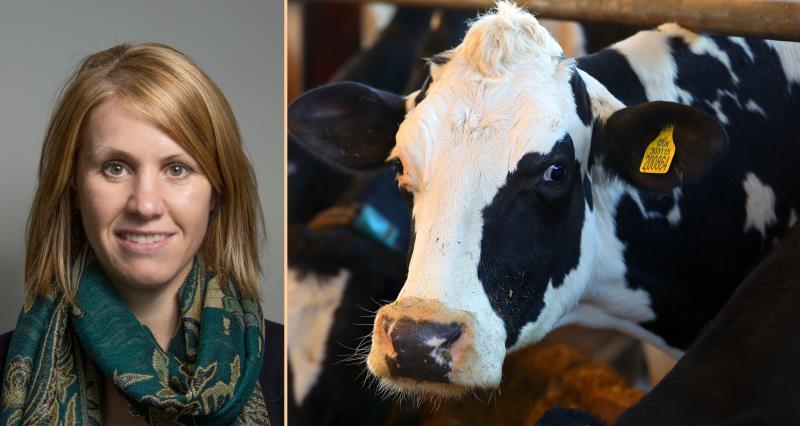Commissioner Hogan bullish on the future of EU dairy, says NFU chief dairy adviser Sian Davies.
This year’s conference provided an interesting line-up with economics and sustainability workshops followed by presentations from EU Agriculture Commissioner Hogan, the CEO’s of four major EU dairy companies including Lactalis, Arla and Valio and a session on managing volatility.
As is the norm at many of these conferences most of the work is done in the fringes of the main conference hall and myself and dairy board chairman Michael Oakes met with farming delegations from Germany, Sweden, France and Ireland as well as DairyUK, Eucolait, Muller EU, DMK, Sodiaal and Glanbia.
The Commissioner started the conference positively by citing the promising signs of a recovery in key commodities over the past three months. EU butter prices are now on a par with the historical records of 2013 (€4 210/tonne), with prices for butter and cheese expected to remain robust through early 2017. Mr Hogan was also clear that while he’d seen vast improvements in market prices these were yet to translate to farm. He was clear that milk buyers have a vital role in better supply management and shouldn’t just expect the Commission “to fork out more money”. In a surprising remark he supported his voluntary EU supply management scheme stating that “it is now playing its part in the 4th quarter of 2016”.
He then challenged top dairy executives from Valio, Arla Foods, Hochland and Lactalis for greater market orientation with the words, “as long as we produce what the market demands, recovery is guaranteed - the sector as a whole must think strategically – market signals must echo throughout the chain so that production matches outlet options.” While farmers across the EU had signed up to supply management scheme Hogan now wanted the same level of commitment from industry, rather than continue to expect the Commission to mop up any surplus. In his words the Commission was “the only buyer for much of 2016.”
One message that was clear throughout the conference was that lessons must be learned from the latest market downturn. From the Commission’s side, Hogan made clear that the new CAP will seek to build resilience in the EU farming sector to cope with future shocks through enhancing the income safety net, meeting international commitments such as the UN climate deal and Sustainable Development Goals, generational renewal and access to finance and credit.
Interested in dairy? Read more in our dairy news channel here
The Commission will launch a 12-week public consultation on the shape of the CAP post-2020 in January (on 4-5 options), which would form the basis of a Communication by the end of 2017, ahead of legislative proposals in (early) 2018. At least EU farmers will know what the future looks like for them.
Brexit was of course a hot topic of discussion with Arla’s Peter Tuborgh calling for continued access to the single market and free movement of labour. Most of the buyers present at EDA import and/or export products to and from the UK. To my surprise the Commissioner is yet to meet Defra Secretary of State Andrea Leadsom and is more than ready to discuss agricultural policy and trade with the UK Government. Hogan’s message, even more pertinent after this week’s vote in Italy, is that if you blame the EU for everything for the past 35 years don’t expect your electorate to vote to stay in. But he also added “if you expect better conditions outside the club than inside it, why would anyone be in the club.”
As a farming union the NFU needs to continue to meet regularly with our European counterparts as they, and their Governments will have far more influence with the European institutions over the months and years to come – and most continue to want to work and trade with the UK, or at least that’s what they’re telling us.
